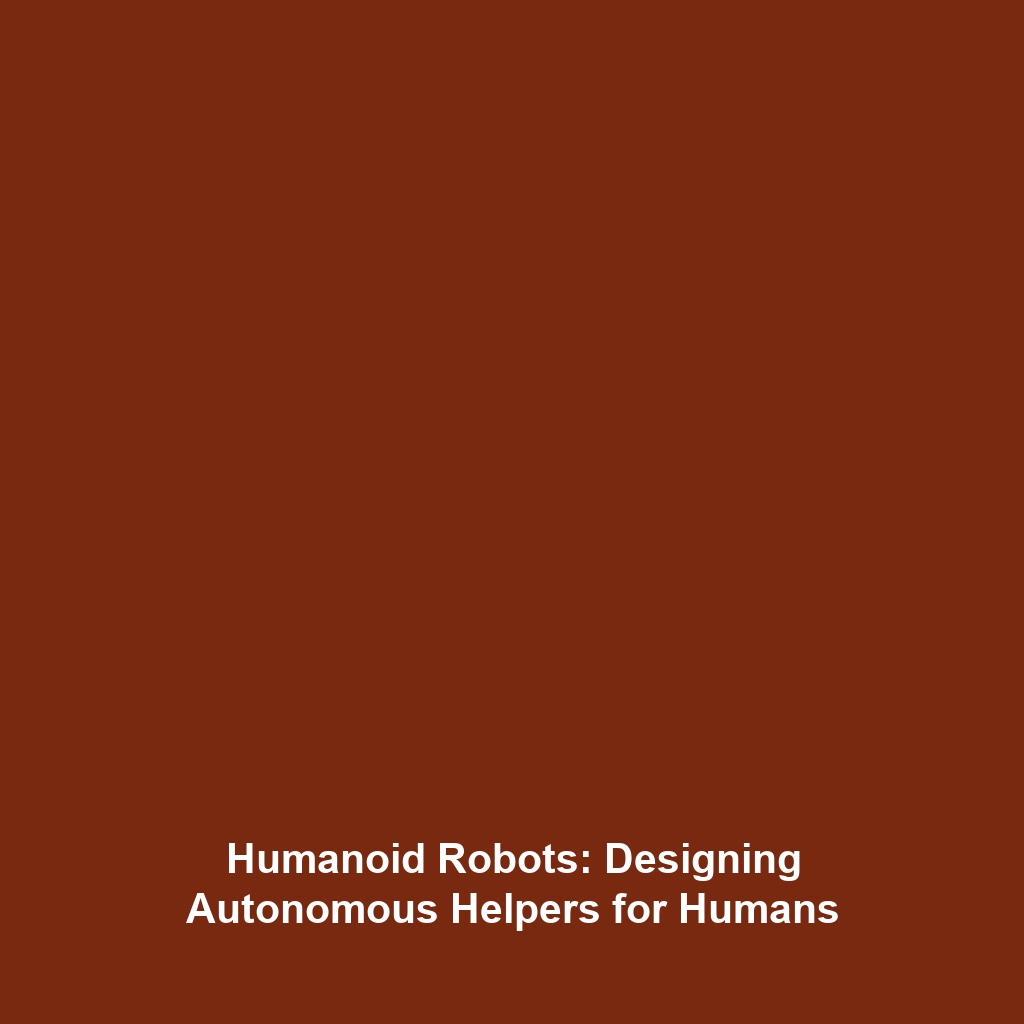Military and Industrial Applications of Exoskeletons for Enhancing Human Strength and Endurance
Introduction
The evolution of exoskeleton technology has gradually transformed military and industrial sectors by enhancing human strength and endurance. Exoskeletons, often defined as wearable robotic systems, serve a significant role in improving performance under physically demanding conditions. By integrating humanoid robotics into various applications, these advanced systems not only augment the physical capabilities of operators but also ensure safety and efficiency in challenging environments. As the demand for human enhancement continues to rise, understanding the military and industrial applications of exoskeletons becomes increasingly crucial.
Key Concepts
The foundational principles surrounding the applications of exoskeletons involve biomechanics, robotics, and human physiology.
- Biomechanics: The study of mechanical laws relating to the movement or structure of living organisms forms the basis of how exoskeletons are designed to support human motion.
- Robotics: Humanoid robots leverage advanced robotics technologies to create more intuitive and responsive exoskeleton systems that adapt to user movements.
- Human Physiology: Understanding how the human body operates under stress informs design enhancements that allow for increased strength and endurance while minimizing fatigue.
By merging these concepts, exoskeletons exemplify a profound leap in the functionality of humanoid robots within military and industrial settings.
Applications and Real-World Uses
The application of exoskeletons extends across multiple sectors, showcasing significant advancements in military and industrial contexts. Some notable examples include:
- Military Operations: In combat zones, exoskeletons are utilized by soldiers to carry heavier loads without the risk of injury. This application significantly enhances mobility and endurance during missions.
- Industrial Manufacturing: Factories employ exoskeletons to assist workers in lifting heavy components, reducing the physical strain, thereby diminishing workplace injuries and increasing overall productivity.
- Logistics and Warehousing: Workers equipped with exoskeletons can efficiently manage heavy inventory operations, exemplifying how these devices can streamline workflow and reduce back pain and fatigue.
These applications emphasize how exoskeleton technology is redefining operations within both the military and industrial sectors.
Current Challenges
Despite the potential of exoskeletons, several challenges hinder their widespread adoption in military and industrial settings. The key issues include:
- Cost: The initial investment for exoskeleton systems can be prohibitively high for many organizations.
- Integration: Seamlessly integrating these devices into existing workflows and ensuring compatibility with human operators can be complex.
- Battery Life: Limited battery life affects performance duration, particularly in military settings where prolonged operation is often required.
- Training: Workers and soldiers need comprehensive training to effectively use exoskeletons, which can add to operational overhead.
Addressing these challenges is vital for realizing the full potential of exoskeleton technology in enhancing human capabilities.
Future Research and Innovations
The future of exoskeleton technology appears promising, with ongoing research aiming to overcome existing limitations and pave the way for new innovations. Emerging trends include:
- AI Integration: Incorporating artificial intelligence to improve user interface and responsiveness of exoskeletons.
- Lightweight Materials: Developing advanced materials that are both lightweight and durable to enhance comfort and ease of use.
- Enhanced Mobility: Focusing on technologies that allow for a more natural range of motion, improving the overall user experience.
These advancements underscore the significant impact that continued research will have on the military and industrial applications of exoskeletons.
Conclusion
In conclusion, the integration of exoskeleton technology into military and industrial applications represents a pivotal advancement in enhancing human strength and endurance. As humanoid robots continue to evolve, the potential benefits—including improved safety, productivity, and performance—are vast. Ongoing research and innovation will further solidify the role of exoskeletons in modern operations. For more insights into related topics, explore our articles on humanoid robots and robotics applications in industry.









